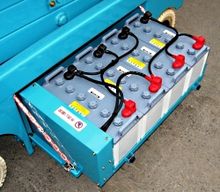The Search for WMD's
Mark_Q - ©May 21, 2009
The Story
While it is true the title of this short article is designed to get your attention, it also defines a cultural need in design. So here is the story, and the learning which can result from the search for WMD’s:
When I was a much younger car nut, I spent a lot of time under the hood of various cars usually with the intent of making them Ferrari like. While I never got quite to the Ferrari level in my quest for better performance, I did learn a lot about many different cars. I also learned a bit about service and design for service. I found it fascinating that the higher end cars were almost always the most difficult to service and seemed the least designed with service in mind.
Very often with the hood up, the engine hot, my hands covered with old car slime and my body in a strangely contorted shape trying to reach a specific part I would exclaim out loud “What Moron Designed this?!”. Hence the acronym “WMD”. This of course was exclaimed more loudly if the part in question was a standard service part such as an oil-filter (1986 Toyota MR2).
So now roll through a few decades of these experiences and you can see why I have a passion for designing in serviceability. That is, I do not want anyone exclaiming to themselves or their colleagues, “What moron designed this?” when they are touching or servicing any equipment I or my team has designed. Further to this and maybe more importantly, this speaks directly to cost of ownership. That is, if it is more difficult to service the part, it is naturally by extension more expensive and if it costs more to own, we will not sell as many, our customers will not make as much money and our machines may go un-serviced.
So, how do we Search for WMD’s?
It is simple. Go work on a machine (Go to Gemba). Get your hands dirty and go change an oil filter, replace a motor, service a manifold, etc. It is Genchi Genbutsu in every sense of the concept. If you have to lie in the mud to perform a task, change the design so you can do this task standing on your feet. If you have to remove unrelated parts or large amounts of “stuff” to access a normal service part, have a tip or 3P using production and service support and change the design. Chances are pretty good that if you make it easier to service, you also make it easier to build in the first place.
With this shop floor experience, build your passion in this direction and make it a goal on every design project, large or small, to design in the most easily serviced areas and components in this equipment in this industry. We will all win and win big for this effort.
